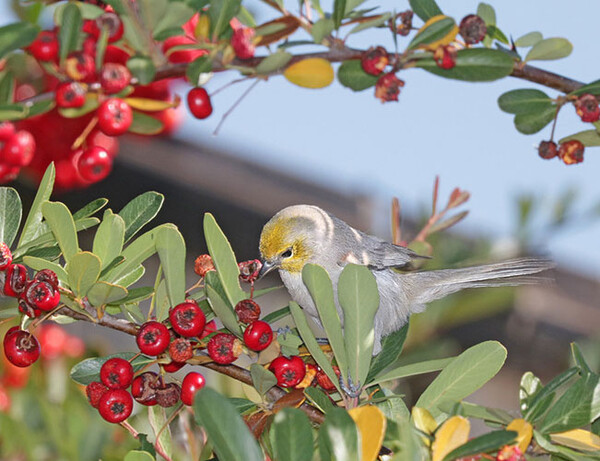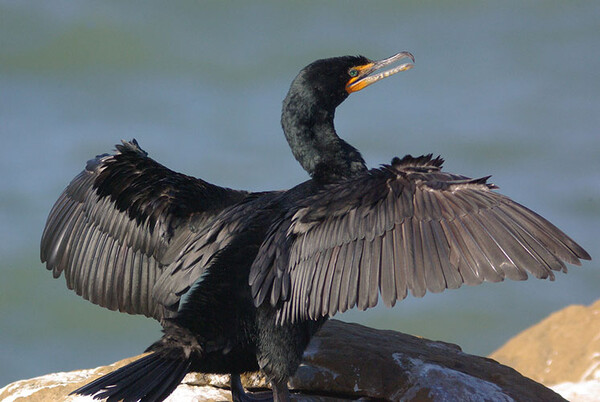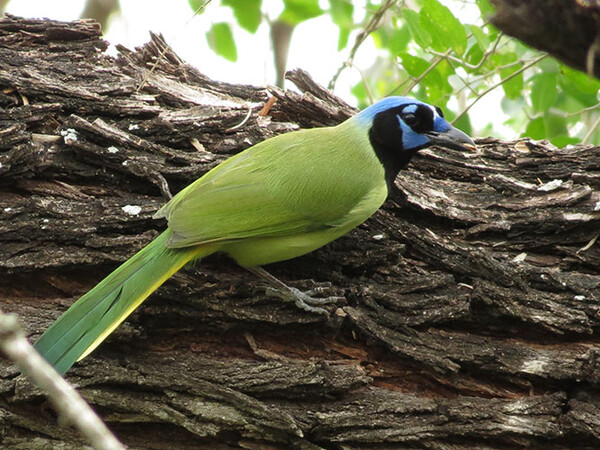By John Brush, Urban Ecologist, Quinta Mazatlán in McAllen
 We all feel it; the sun peering intently, directly down on us, the oven-like heat rising from streets and sidewalks, the instantaneous beads of sweat appearing as we take two steps outdoors. We are in the hottest months of the summer, and it changes us. We sweat more, spend more time indoors, and crank up the air conditioning – all in the effort of keeping our bodies from overheating, and, let us be honest, for general comfort. Birds, excepting grocery store sparrows, do not have access to air conditioning, which raises the question: how do birds beat the intense summer heat?
We all feel it; the sun peering intently, directly down on us, the oven-like heat rising from streets and sidewalks, the instantaneous beads of sweat appearing as we take two steps outdoors. We are in the hottest months of the summer, and it changes us. We sweat more, spend more time indoors, and crank up the air conditioning – all in the effort of keeping our bodies from overheating, and, let us be honest, for general comfort. Birds, excepting grocery store sparrows, do not have access to air conditioning, which raises the question: how do birds beat the intense summer heat?
Even though birds tend to have higher body temperatures than humans, they still need thermoregulation to prevent overheating. Like us, they change their behaviors to adapt. Verdins, tiny desert-dwellers of the U.S. and Mexico, spend 20% more time sitting still during the summer, especially in shade, and mostly forage for food during the relatively cool mornings and evenings. Black-tailed gnatcatchers, also miniscule desert birds, also change how they forage to moving more slowly and spending more time in the densest foliage.
 Unlike humans, birds cannot sweat. However, they do have a variety of other physiological ways to cool off. Birds breathe faster with open mouths (panting) when they are hot, benefitting from the same evaporative cooling that sweating provides. Just watch great-tailed grackles on a summer afternoon to see panting. Birds also take panting further and rapidly move the skin on their neck, something called gular fluttering, to increase evaporative cooling. Gular fluttering is common in chachalacas, herons, cormorants, and a variety of other birds.
Unlike humans, birds cannot sweat. However, they do have a variety of other physiological ways to cool off. Birds breathe faster with open mouths (panting) when they are hot, benefitting from the same evaporative cooling that sweating provides. Just watch great-tailed grackles on a summer afternoon to see panting. Birds also take panting further and rapidly move the skin on their neck, something called gular fluttering, to increase evaporative cooling. Gular fluttering is common in chachalacas, herons, cormorants, and a variety of other birds.
Other methods of cooling include wing spreading – think of that immediate ahh feeling when you let the wind blow under your outstretched arms – and flattening feathers to reduce any warming insulation effects, like people wearing lighter, more breathable clothing. The Wood Stork, a large wading bird that seen in Valley wetlands, has a highly effective method of cooling off that accomplishes temperature and gastrointestinal relief at the same time. It excretes on itself, letting the fluids cool off its long legs.
 One of the tradeoffs for evaporative cooling is that it uses up water, making it vital for our south Texas birds to find a reliable source. Some replenish their systems with what they eat. The aforementioned gnatcatchers can help offset water costs by eating juicy insects. Fruit-eating birds, like northern mockingbirds, gain fluids from water-laden fruits, such as those from granjeno, brasil, and prickly pear.
One of the tradeoffs for evaporative cooling is that it uses up water, making it vital for our south Texas birds to find a reliable source. Some replenish their systems with what they eat. The aforementioned gnatcatchers can help offset water costs by eating juicy insects. Fruit-eating birds, like northern mockingbirds, gain fluids from water-laden fruits, such as those from granjeno, brasil, and prickly pear.
Other birds are adept at finding water sources in our urban areas. House Finches and Lesser Goldfinches quickly locate leaking faucets – it is common to see either species hanging upside down or otherwise contorting their bodies to get a drink. Overflow puddles in streets and parking lots are also popular watering holes for grackles, starlings, and sparrows.
The summer is toasty for us all – help provide water and cooling for your backyard birds by setting up a shallow, gradual birdbath and planting native plants for shade! For backyard ideas, take a walk through Quinta Mazatlán’s big backyard, Tuesday through Saturday, 8 to 5 and Thursday nights. Follow the Quinta Mazatlán YouTube Channel, Facebook and other social media platforms to learn more about our natural heritage in South Texas.













